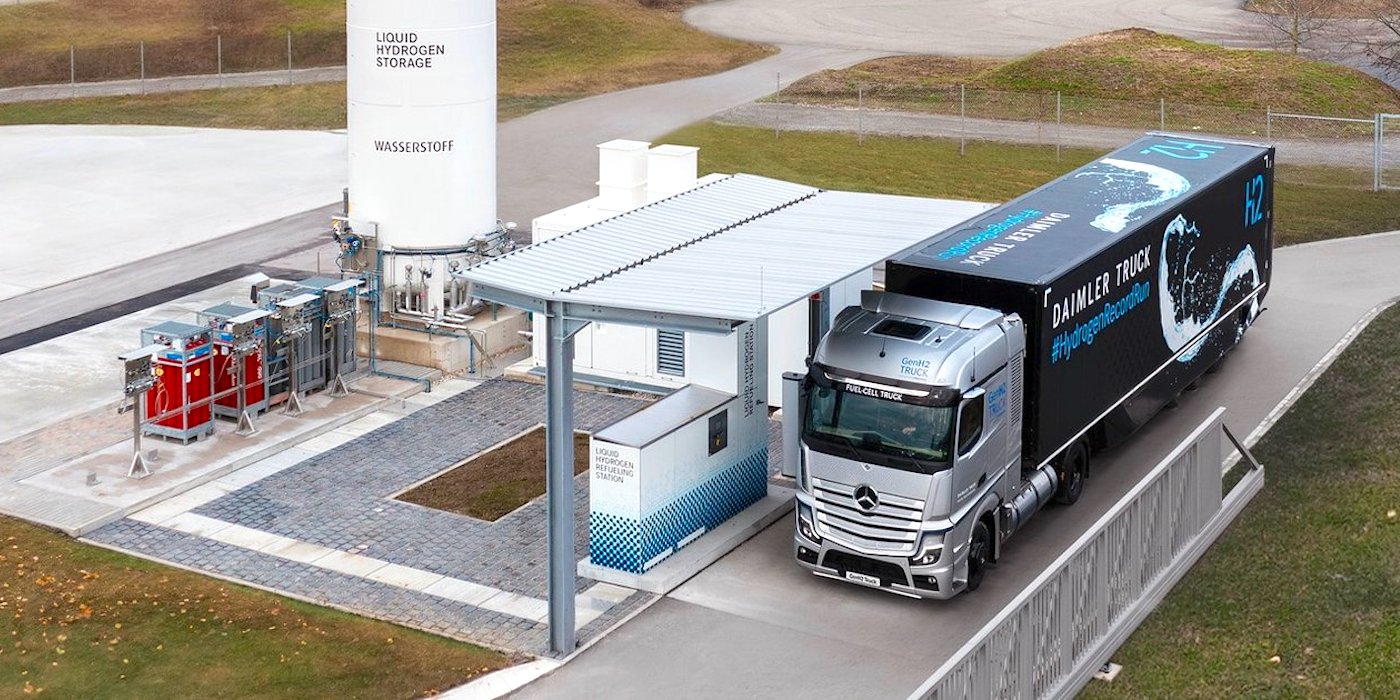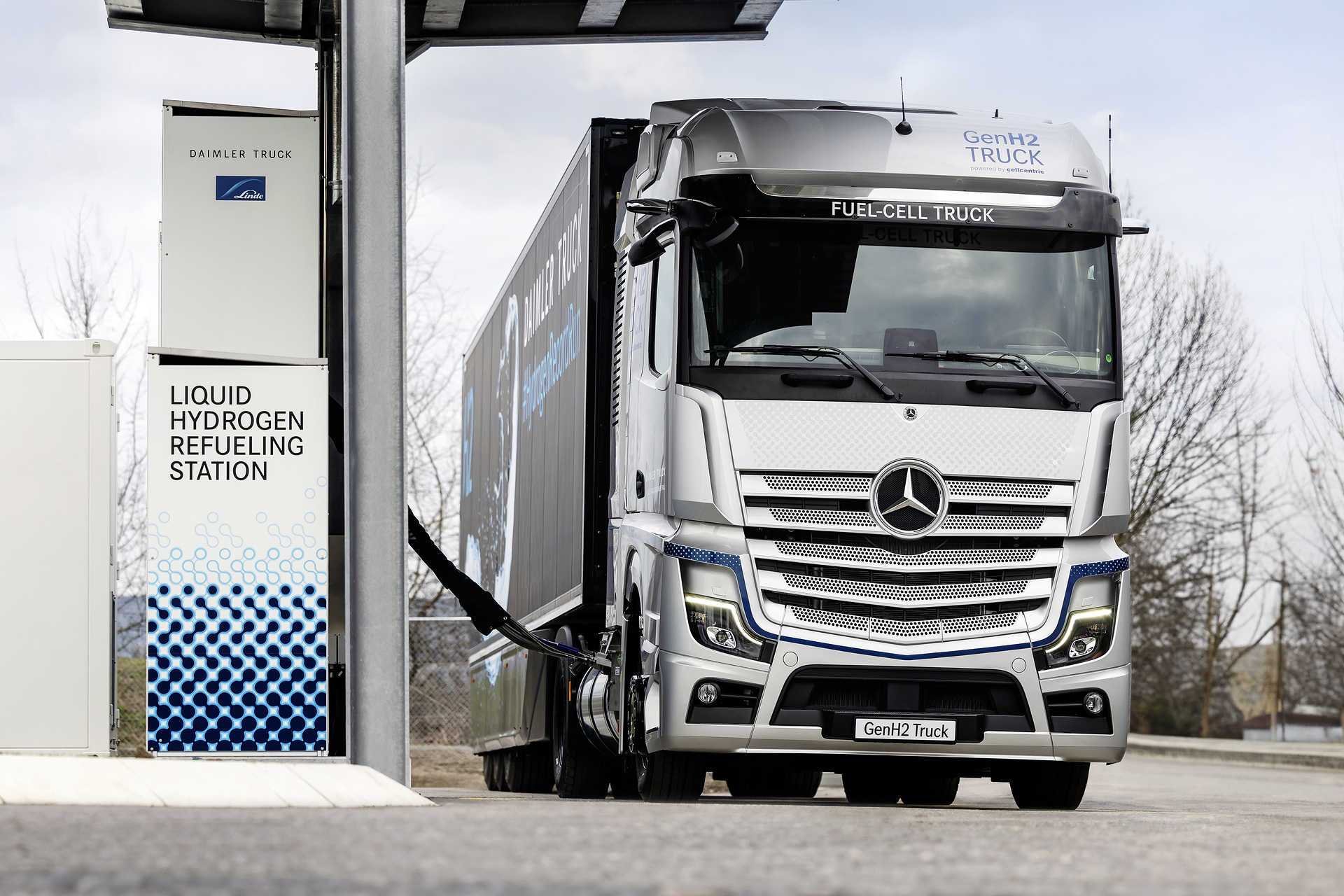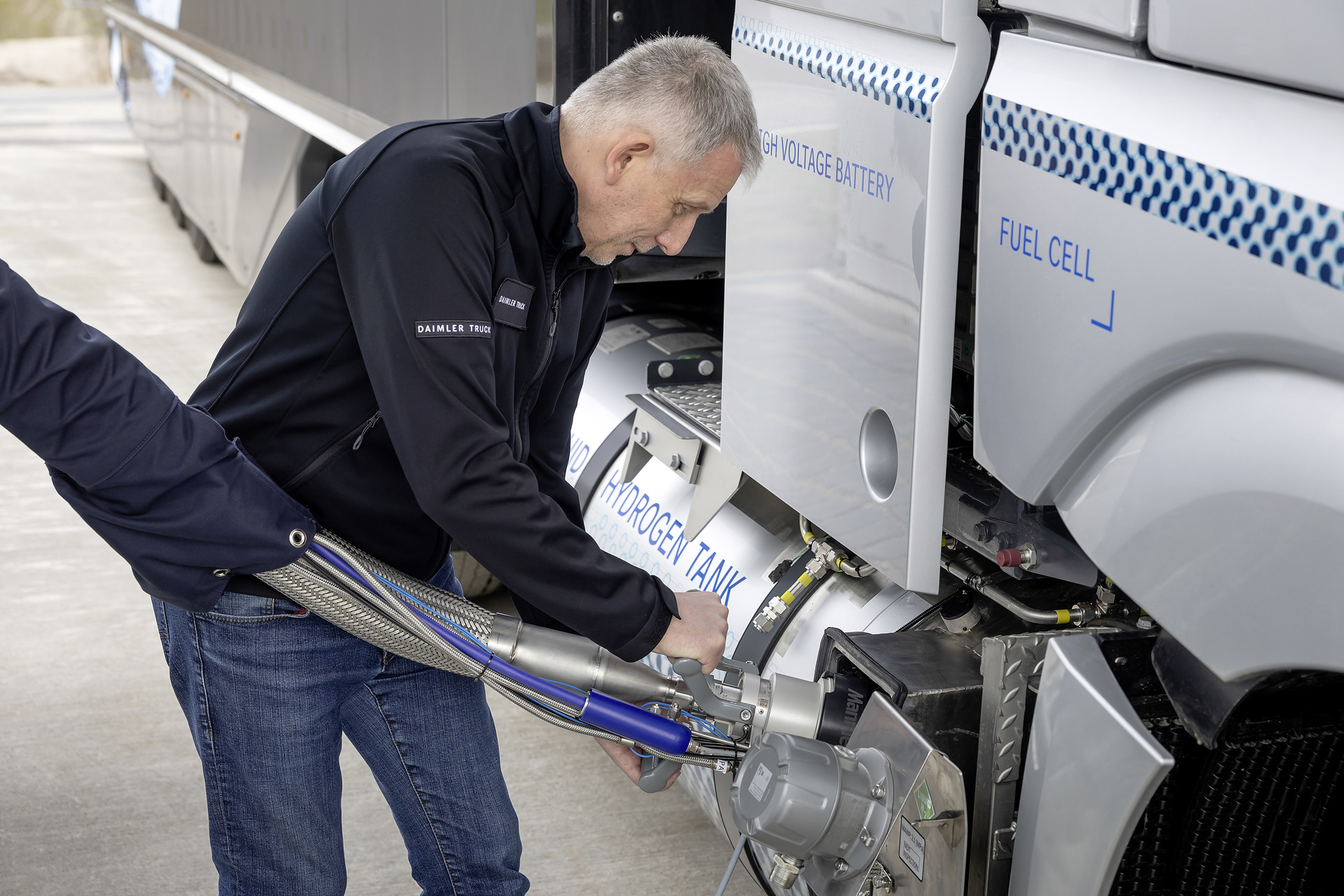
This week, Daimler Truck and Linde Engineering presented sLH2, a jointly developed refueling technology for sub-cooled liquid hydrogen – and they’ve made the technology openly available to anyone who wants it.
Engineers from both Daimler and Linde have co-developed sLH2, a new process for handling and storing sub-cooled liquid hydrogen – an approach that allows for a higher hydrogen storage density, faster refueling, and superior energy efficiency than gaseous hydrogen. The best part? sLH2 can do all of that for less money than “conventional” hydrogen solutions. That’s less money both in terms of operational costs and infrastructure investment compared to gaseous hydrogen – coming in at about 1/5th and 1/2, respectively.
Compared to regular liquid hydrogen (LH2) refueling technology, the new process uses a new innovative sLH2 pump to slightly increase the pressure of the liquid hydrogen. With this method, the hydrogen becomes subcooled liquid hydrogen (sLH2). Hydrogen in this state, facilitates a very robust fueling process that also keeps energy losses during refueling to a minimum. Furthermore, no data transmission between the refueling station and vehicle is necessary, which further reduces the complexity of the solution. At the same time, refueling capacity is increased to new levels. The pilot refueling station has a capacity of 400 kg of liquid hydrogen per hour. In comparison to regular liquid or gaseous hydrogen refueling concepts, sLH2 is considerably simpler while delivering increased performance.
Daimler Truck
If that’s true, it’s a huge step towards making hydrogen a more practical alternative to diesel in the over-the-road trucking space. Another huge step? 1000 km of range (~620 miles) is available from 80 kg of hydrogen, which can be pumped into the Mercedes-badged, 80,000 lb. OTR semi in less than 15 minutes.
Open-source hydrogen refueling tech






The new public sLH2 refueling station in Wörth am Rhein, Germany, sets a benchmark in terms of energy efficiency and performance. With energy consumption of only 0.05 KWh/kg, it requires approximately 30 times less energy compared with conventional gaseous hydrogen refueling. The refueling station has a small footprint of just 50 square meters (not including the dispenser) and allows for configurations where several dispensers for parallel refueling of trucks are possible, as well as back-to-back refueling.
Daimler trucks
“Zero-emission transport needs three factors: the right battery-electric and hydrogen-powered vehicles, the required infrastructure network and cost parity for ZEVs compared to diesel trucks,” Andreas Gorbach, Member of the Board of Management of Daimler Truck AG responsible for Truck Technology. “In terms of vehicles, the transformation is in full swing. In terms of hydrogen infrastructure, we are reaching a major milestone today: With sLH2, hydrogen refueling becomes as convenient as today’s refueling with diesel … we now call on other OEMs and infrastructure companies to follow our approach and jointly make this technology an industry standard.”
Top comment by t_newt
I wasn't aware that trucking companies were so flush with cash that they were willing to pay 4 to 8x the cost of gasoline to fill their trucks.
Of course, they aren't. All these 'hydrogen truck' song and dance shows are entirely taxpayer subsidy funded. Shipping companies are barely scraping by as it is. There is no way any freight company can afford to pay so much extra to fuel their vehicles.
"But hydrogen will cost less than gasoline any day now! Just look at all the scientific breakthroughs being reported every week! (by oil companies)" They've been saying that for the last 15 years and the price is now the equivalent of paying $30/gallon for gasoline, the price at actual hydrogen pumps in California. There's theory, and there's the hard reality.
If they want to experiment with liquid hydrogen, that's fine. But based on past experience, especially actual (as opposed to theoretical) costs, no one should get their hopes up.
Daimler and Linde have standardized the sLH2 tech in an open ISO process that’s available to all interested parties. Now, Daimler Truck and Linde Engineering are calling on other OEMs, infrastructure companies and associations to apply the new liquid hydrogen standard.
What happens next is anyone’s guess.
Electrek’s Take
Hydrogen is dead in the water when it comes to passenger cars, but the same isn’t obviously true on the heavy equipment side of things, where thousands of kWhs’ worth of work needs to be done day-in and day-out and the energy density of batteries just isn’t yet there. Despite that, hydrogen’s heavy costs – both carbon and monetary – have kept it an impractical option.
At 1/5th the cost and without the need for a constant data connection, though? All of a sudden, commercial hydrogen doesn’t seem so impossible after all.
FTC: We use income earning auto affiliate links. More.





Comments